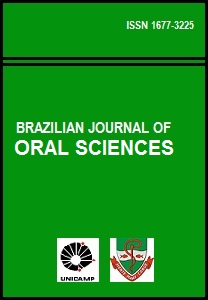Abstract
Aim: The purpose of this study was to determine the effects of early treatment on the maxillary dental arches in children with mixed dentition. Methods: It was evaluated 40 lateral cephalograms (20 pre and 20 posttreatment) from girls with mean age of 9.15 years, who had class II, division 1 malocclusion and received occipital headgear treatment with 350 g of force applied bilaterally 14 hours per day, during 22.35 months. The values of: SN.GoGn, FMA, N-ANS, ANS-Me, S-Ptm, Ptm-ANS, SNA, SNB, ANB, Ptm-6, 1.NA, 1.PP were evaluated. The Dalhberg’s formula revealed a casual error smaller than 1.5° and 1.0 mm, indicating reliability of the obtained data. Results: The data revealed that the growth pattern did not change with the treatment. The ANS-Me decreased. The jaw relationship changed positively, reducing the value of ANB. Anterior maxillary displacement was limited and the anteroposterior dimension increased. The maxillary molars were moved distally and incisors were retracted. Conclusions: The early treatment with occipital headgear was effective in moving maxillary teeth distally and retracting incisors, improving the jaw relationship and favoring the second phase of the orthodontic treatment when necessary.The Brazilian Journal of Oral Sciences uses the Creative Commons license (CC), thus preserving the integrity of the articles in an open access environment.
Downloads
Download data is not yet available.

